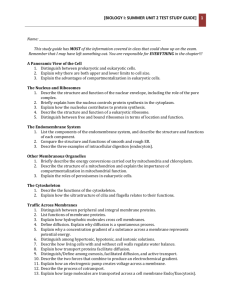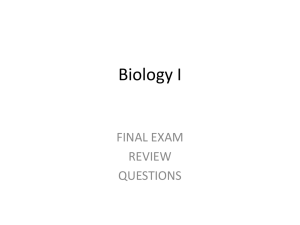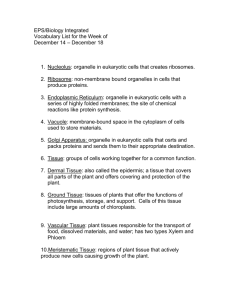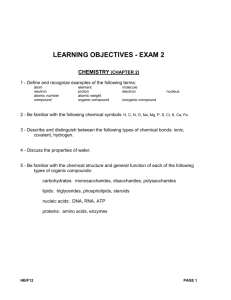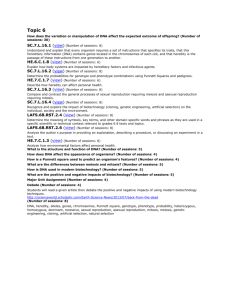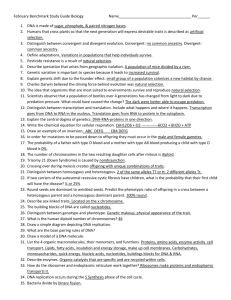I Can
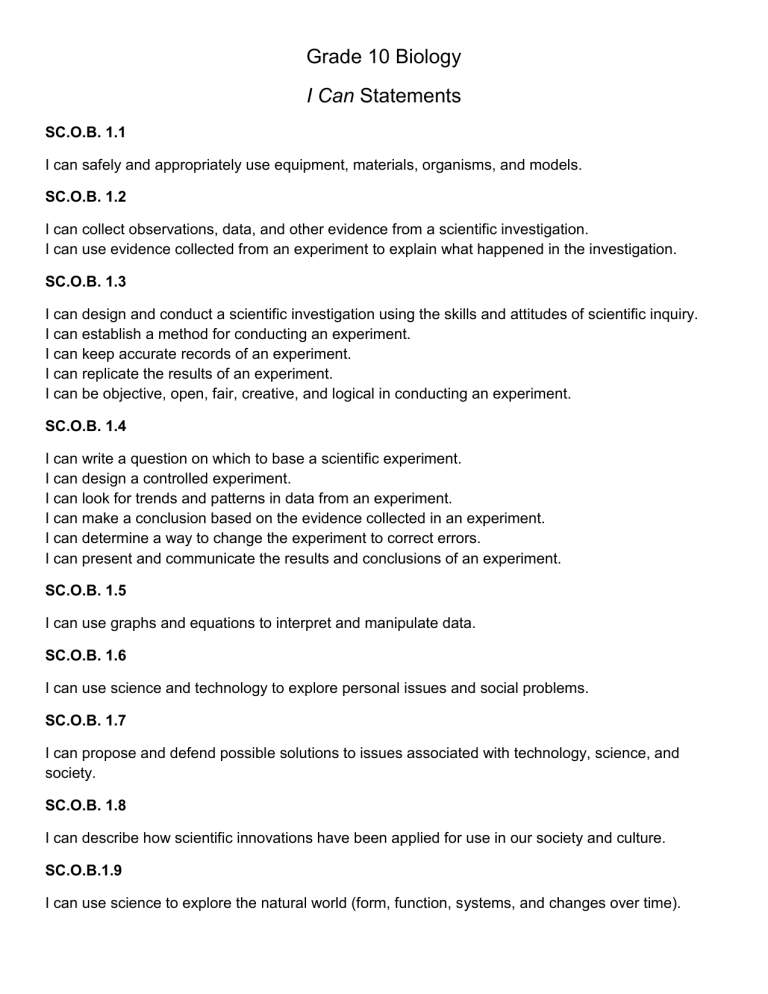
Grade 10 Biology
I Can Statements
SC.O.B. 1.1
I can safely and appropriately use equipment, materials, organisms, and models.
SC.O.B. 1.2
I can collect observations, data, and other evidence from a scientific investigation.
I can use evidence collected from an experiment to explain what happened in the investigation.
SC.O.B. 1.3
I can design and conduct a scientific investigation using the skills and attitudes of scientific inquiry.
I can establish a method for conducting an experiment.
I can keep accurate records of an experiment.
I can replicate the results of an experiment.
I can be objective, open, fair, creative, and logical in conducting an experiment.
SC.O.B. 1.4
I can write a question on which to base a scientific experiment.
I can design a controlled experiment.
I can look for trends and patterns in data from an experiment.
I can make a conclusion based on the evidence collected in an experiment.
I can determine a way to change the experiment to correct errors.
I can present and communicate the results and conclusions of an experiment.
SC.O.B. 1.5
I can use graphs and equations to interpret and manipulate data.
SC.O.B. 1.6
I can use science and technology to explore personal issues and social problems.
SC.O.B. 1.7
I can propose and defend possible solutions to issues associated with technology, science, and society.
SC.O.B. 1.8
I can describe how scientific innovations have been applied for use in our society and culture.
SC.O.B.1.9
I can use science to explore the natural world (form, function, systems, and changes over time).
SC.O.B. 2.1
I can list the properties and functions of the main types of biological molecules (carbohydrates, lipids, proteins, and nucleic acids).
I can explain how the properties of each type of biological molecule relate to their functions in a cell’s metabolism.
SC.O.B. 2.2
I can identify the structure of each cell organelle.
I can identify the function of each cell organelle.
I can identify a eukaryotic cell.
I can explain how the structure of each organelle is specialized to help it perform its function in a eukaryotic cell.
SC.O.B. 2.3
I can distinguish prokaryotic, eukaryotic, plant, animal, archaea, bacteria, and various body cells by structure, function, and location.
SC.O.B. 2.4
I can identify each body system by their structures and functions.
I can identify each body system’s contribution to the functioning of an organism.
I can explain how the structure of each body system is specialized to perform its specific function.
SC.O.B. 2.5
I can identify/predict how organisms respond to internal stimuli and stimuli for the environment.
SC.O.B. 2.6
I can explain the structure of a cell membrane.
I can define osmosis, diffusion, dialysis, active and passive transport.
I can explain how molecules move across the cell membrane by the processes of osmosis, diffusion, dialysis, active and passive transport.
SC.O.B. 2.7
I can identify how much energy is used and produced by the processes of photosynthesis, cellular respiration, and fermentation.
SC.O.B. 2.8
I can define homeostasis, negative feedback, and positive feedback.
I can distinguish between positive and negative feedback.
I can explain how negative and positive feedback help maintain an organism in homeostasis.
SC.O.B. 2.9
I can identify the parts of the cell cycle.
I can compare and contrast a gamete with a somatic cell.
I can compare and contrast binary fission, mitosis and meiosis as to the stages in each process, type and number of cells that result, and the chromosome number in the new cells.
I can explain how variation or lack of variation results in new cells produced by binary fission, mitosis, and meiosis.
I can distinguish between haploid and diploid chromosome number.
I can explain how meiosis produces gametes.
I can explain how mitosis produces somatic cells.
SC.O.B. 2.10
I can explain Mendel’s Laws of Genetics for complete and incomplete dominance, codominance, sexlinked, and multiple alleles.
I can use a Punnett square to determine the possible genotypes and phenotypes of offspring resulting from monohybrid and dihybrid crosses..
I can use Punnett square results to determine a predicted phenotypic ratio in the offspring.
SC.O.B.2.11
I can distinguish between a karyotype and a pedigree.
I can explain how karyotypes and pedigrees can be used to determine genetic outcomes.
SC.O.B.2.12
I can reconstruct the double helix structure of a DNA molecule.
I can explain how changes in the DNA structure can produce mutations.
I can explain how a DNA molecule replicates.
SC.O.B.2.13
I can distinguish messenger, transfer, and ribosomal RNA by function and structure.
I can define the processes of transcription and translation.
I can explain the role of RNA (messenger, transfer, and ribosomal) in the processes of transcription and translation.
SC.O.B. 2.14
I can explain how knowledge of DNA technology is important in modern society.
SC.O.B. 2.15
I can define the process of natural selection, speciation, and homologous structures.
I can explain the significance of speciation, fossil evidence, cellular similarities, and homologous structures as evidence of natural selection.
SC.O.B. 2.16
I can relate the history of the development of the theory of evolution to the social climate at the time.
SC.O.B. 2.17
I can classify organisms using various classification systems.
SC.O.B. 2.18
I can make lists of characteristics of viruses that could identify them as both living and non-living.
SC.O.B.2.19
I can identify and explain the steps in virus reproduction.
I can define various methods of preventing the spread of disease; vaccination, vector control, and drug therapy.
I can distinguish between vaccination, vector control, and drug therapy as means of preventing a disease.
SC.O.B. 2.20
I can identify and explain how environmental factors affect succession, populations, and communities.
SC.O.B. 2.21
I can create examples of ecosystems that include appropriate biotic (living) and abiotic (non-living) environmental variables.
SC.O.B. 22
I can define food chain, food web, and food (energy) pyramid.
I can explain how energy cycles through a food chain, food web, and a food pyramid.
SC.O.B. 2.23
I can identify a feeding relationship as being symbiotic, competitive, predatory, mutualistic, parasitic, or commensalistic.
SC.O.B. 2.24
I can determine the factors that limit the number of organisms that an ecosystem can support.
I can use graphs, maps, and GIS data to predict the number (density) of organisms an ecosystem can support.
Revised June 2010

